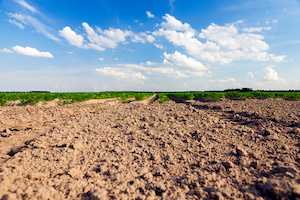Iowa State University Extension and Outreach experts recently provided tips for reducing soil compaction during harvest. This advice comes as a result of rain events during September and October which have created challenging conditions for producers. Wet conditions, in combination with a drop in air pressure, will undoubtedly slow harvest operations, according to the experts.
Soils may be too wet for heavy equipment, making them extremely susceptible to compaction during harvest. When soils are near saturated conditions, the soil can be weakened by heavy machinery, ultimately leading to the collapse of soil aggregates. In addition to causing significant surface compaction, this can result in rutting, as well as deep subsoil compaction.
The experts at the ISU Extension recommend using dedicated travel lanes. It has been documented that 60 to 80 percent of soil compaction occurs from first wheel passes.
In addition to using travel lanes, producers can benefit from reducing the capacity at which they work. Experts state that it’s best to keep axle loads lower in the far reaches of the fields and achieve the highest axle loads near the end rows where grain will be transported out of the field. Using the appropriate tire size and inflation pressure can also help.
Tillage should be minimized or avoided altogether, and producers should always try to harvest around the wettest areas. Finally, harvesters can benefit from concentrating on non-harvest field activities near the point of exit from the field.
